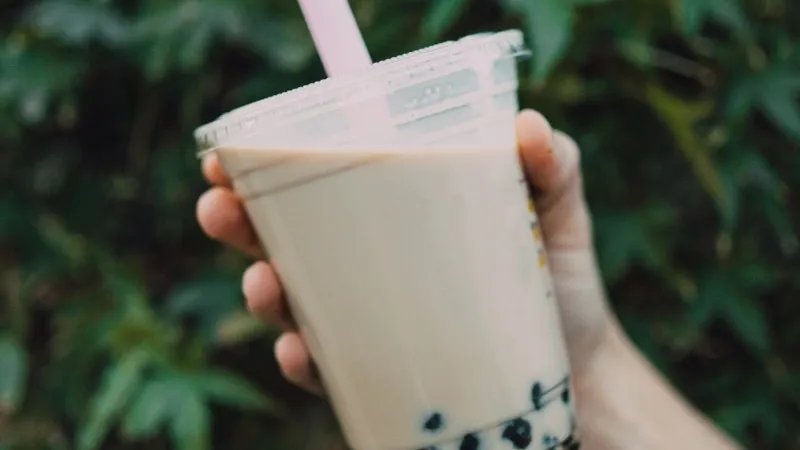
Bubble tea chains offering mix of brand collaborations, gamification and variety to vie for consumer attention
Chatime, Gotcha and Narocha weigh in on competing in the growing bubble tea scene.
Competitors within the far-from-bursting bubble tea category are offering a mix of brand collaborations, gamification and variety to generate and retain visibility, predominantly amongst younger consumers.
Chatime, the country’s largest bubble tea chain, told QSR Media it will launch a gamification platform for their “Hit Your Sweet Spot” campaign — which is promoting their four new popping pearls — to encourage customer to customize drinks through their app and share creations to drive user-generated brand content.
This includes a recently-launched Oreo biscuit crumble mix as a new topping option, a further extension of its partnership with Mondelez after launching Philadelphia Cream Cheese last year. This, Chatime said, is a segue into another Oreo-related launch planned for the summer season.
“Bubble tea [is] gaining traction in emerging markets, and this is having a positive effect on more developed markets such as Australia. The category is slowly being demystified for Western customers,” said Joanna Robinson, the brand's chief marketing officer.
Gotcha Fresh Tea, which has positioned itself as a luxury tea brand, teamed up with Hello Kitty for a collaboration series in May, consisting of cups, stainless-steel bottles, tote bags and other items. The chain revealed upcoming partnerships with Sesame Street and Pokémon.
“The competitive area is how to earn consumer attention and how customers keep their eye on our branding persistently. So, we invest a great deal of our time and resources into innovation, including launching our new products and collaborating with other similar minded brands,” said Christy Chen, Gotcha’s assistant managing director.
For Narocha, getting consumers’ attention meant experimenting with the idea of bubble tea altogether.
Recently, the upstart bubble tea concept based in Melbourne unveiled a limited-edition soft serve range called “Tea-ramisu Collection”, based on their Rose Black and Thai milk tea flavours.
“Bubble tea is very famous with university students but because of COVID, [they] are doing their degrees online. To respond with the current situation, we have expanded our brand to do milk-tea base soft serves with toppings,” Narocha founder and managing director Nicole Culham said.
Health-conscious, sophisticated consumers
Various reports estimate the global bubble tea market to grow at a compound annual growth rate (CAGR) of at least 7.4% over the next three to seven years, due to growing popularity of the category, the introduction of new flavours and perceived health benefits.
Chatime and Narocha offered similar observations.
“Consumers [are] also looking for healthier options without artificial preservatives,” Robinson said. “The Fruity category is very popular with Westerners in the Australians and is often the first entry point into the category before they trade across to bubble tea.”
The brand, however, noted a rise in consumption of flavoured bubble tea in younger generations.
“We have observed that consumers are leaning to a healthier diet and cutting processed products. More and more people are becoming vegan too,” Culham added. “We take pride in being transparent and honest with the ingredients we use because there is nothing to hide.”
Gotcha’s own data shows that over 70% of its customers are women within the 18-34 year old bracket, moving them to collaborate with luxury and global brands.
“They are fancy, sophisticated consumers with their finger on the pulse and a keen eye on chasing the trend. At Gotcha, tea is so much more than tea, it’s a lifestyle,” Chen said.

Chatime said it is aiming to have 150 outlets by the end of the year. Photo: Supplied
Expansion on the horizon despite lingering COVID concerns
All three chains confirmed plans to increase their footprint despite lingering concerns brought about by COVID-19, including a recently-implemented lockdown in Sydney and neighbouring areas.
Chatime said it wants to have 150 of its “T-Breweries” by the end of the year. Despite projected growth, it expects further consolidation from the sector.
“More than ever, brands need to distil, communicate, and live their brand purpose,” Robinson said. “Labour market contraction, sustainability, cost of occupancy and improved Australian Franchise Code Compliance requirements are all current issues.”
Gotcha plans to open about twenty new stores this year, ten of which will open in the brand’s home state of VIC, taking their local store count to 40. The brand is also expanding to New Zealand, Saudi Arabia and Singapore and intends to grow its stores in Indonesia to eight.
“Many of our international franchisees and investors are people who have visited or lived in Melbourne and thoroughly enjoyed the flavours of Gotcha. so much so, that they have joined our Gotcha family and taken on new responsibilities to establish new stores in their home countries,” Chen explained.
Narocha, meanwhile, is opening two more stores in Melbourne to kickstart domestic and international growth.
Further digital investment also remains a key focus for the businesses. Chatime, which has been vocal in leveraging data for its loyalty programme, said analytics and further optimisation will continue to be a focus whilst teasing a new channel growth strategy.
Gotcha recently launched its app for online orders, whilst Narocha said it is growing their online store.
Both Chatime and Gotcha are also working towards eco-friendly packaging.
“The opportunity for bubble tea brands in Australia for 2021 onwards is to continue to educate around the category to encourage greater consideration and trial of new consumer audiences – this is an exciting time for the category,” Robinson concluded.
























